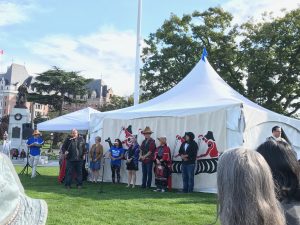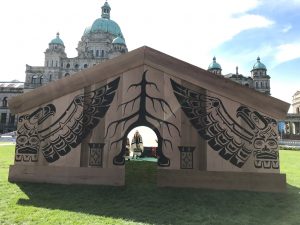Watching the interview with Tim Michel sparked my ideas for discussion for Web Blog Module 4 because the connections he made about the lack of understanding and foresight surrounding Indigenous post-secondary education connects with the area of my group’s research about Indigenous students in STEM/STEAM education and careers. Michel mentions that a career fair, he witnessed universities continually asking prospective students to sign up to their mailing lists. He realized after discussion with many of the Aboriginal students that about 40% didn’t have an email, couldn’t access e-mail, or didn’t have access to a computer at home. It seems there is still quite a disconnect between post-secondary education and our indigenous communities. We can commend many Canadian universities for reducing barriers Indigenous students face, one of which is financial, by providing substantial scholarships and bursaries to help financially support Indigenous students. Moreover, the government of Canada “To ensure that First Nation and Inuit students have the same opportunities for success as other Canadian students… …will increase funding to the Post-Secondary Student Support Program by $90 million over two years, beginning in 2017–18.” This is in addition to “[t]he current budget for the Post-secondary Student Support Program is $340 million which supports approximately 23, 000 First Nation and Inuit Students.”
However, the focus on providing financial means is a bit like putting the cart before the horse if we are unable to support Indigenous youth completing high school with the checklist of requirements, or even at all.
The Canadian labour market is critically understaffed in many technological fields. So much so, that many fortune 500 companies are hiring students before they even graduate and starting them with a six-figure income. Yet despite this, universities are finding lower enrollments in STEM/STEAM courses like computer science. (CBC News)
In an article by Ellie Bothwell from Times Higher Education, she discusses how Canadian Universities can bring more Indigenous Peoples and knowledge. In her article, she notes that “Aboriginal people are the fastest-growing demographic in Canada. More than 1.6 million people – or 4.9 percent of the country’s total population – self-identify as indigenous, according to the 2016 National Household Survey, representing a 42.5 per cent increase since 2006.”
Universities need Indigenous peoples. To help fill out a workforce in STEM/STEAM careers is just one of the many reasons why. But not enough is being done prepare and provide skills for Indigenous students. A report by Randstad looks at Canada’s technical shortage and addresses the need to expand the talent pool to more individuals. Randstad notes: “Statistics for STEM skills among Aboriginal people are even more discouraging. In 2013, 10 percent of the total working-age population of Aboriginals had a university degree compared with 26 percent of the non-Aboriginal population. Making up 3.7 percent of the adult population, only 2.6 percent of people with a post-secondary degree are Aboriginal. Clearly doing more to promote the study of STEM-related disciplines among the Aboriginal population is necessary. As the study points out, the inclusion of people with diverse perspectives, experiences, and ideas creates a wider talent pool with deeper assets. ” (p. 5).
What we can see in statistics is reiterated in the academic research and literature and that is the need to couple Indigenous knowledge with 21st-century learning in order to increase the success rate of Aboriginal learners. As Munroe, Borden, Orr, Toney, and Meader (2013) write that it’s essential “to ensure that Aboriginal children maintain their cultural identity while achieving their formal education” and “that schools that respect and support a child’s culture and language demonstrate significantly better outcomes for students” (p. 319).
Click the following articles for more on culturally response education.
That’s why programs like ANCESTOR (AboriginNal Computer Education through STORytelling) are not only successful but essential. Students at LÁU,WELNEW Tribal School in Brentwood Bay have animate stories that hold meaning to them and in return, produce outstanding results. As their teacher notes: “Translating arm and arrow movement into animation involved an incredible level of problem-solving and I’ve seen it spill into other parts of his education such as improvement in math. He has turned into the classroom problem-solver,”. For more information on the ANCESTOR project, review the link below.


